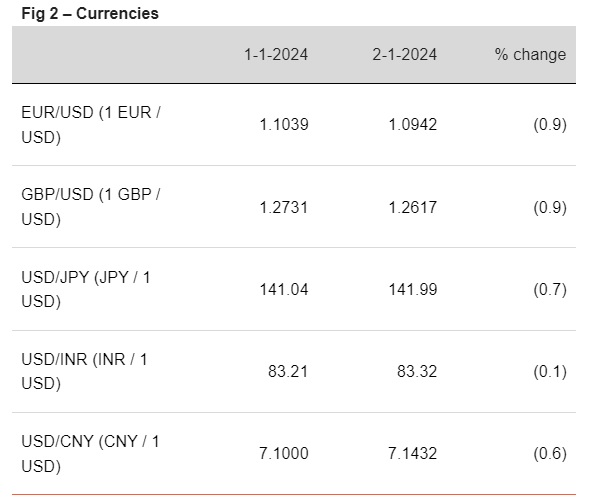In Asia, conditions seem to be slightly better

Sonal Badhan,
Economist,
Bank of Baroda
Mumbai, January 3, 2024: Global manufacturing activity remains under duress, as contraction was reported in 23 out of 29 surveyed countries by Markit PMI. Global manufacturing PMI fell to 49 in Dec’23 from 49.3 in Nov’23. Downturn deepened in US (47.9 versus 49.4) and UK (46.2 versus 47.2). In Eurozone, pace of contraction eased a tad (44.4 versus 44.2), but the the biggest economies (Germany and France) continued to report faster pace of deteriorating conditions. In Asia, conditions seem to be slightly better. Singapore’s Q4CY23 GDP rose by 2.8%, following 1% rise in Q3, mainly on account of gains made in manufacturing and construction sector.
Domestically, RBI has issued new rules regarding declaration of dividends by banks. The proposed rules will be effective from FY25. It was suggested that net NPA ratio for a financial year for which dividend is announced, should be lower than 6%.
Barring Dow Jones, other global indices ended lower. Investors await key payrolls report scheduled later this week, in order to gauge the timing of Fed rate cut. Fed is expected to hold rates in Jan’24 and start the rate cut cycle in Mar’24. Sensex ended lower and was dragged down by losses in cap goods and auto stocks. It is trading lower today in line with other Asian markets.
(The views expressed in this research note are personal views of the author(s) and do not necessarily reflect the views of Bank of Baroda. Nothing contained in this publication shall constitute or be deemed to constitute an offer to sell/ purchase or as an invitation or solicitation to do so for any securities of any entity.)